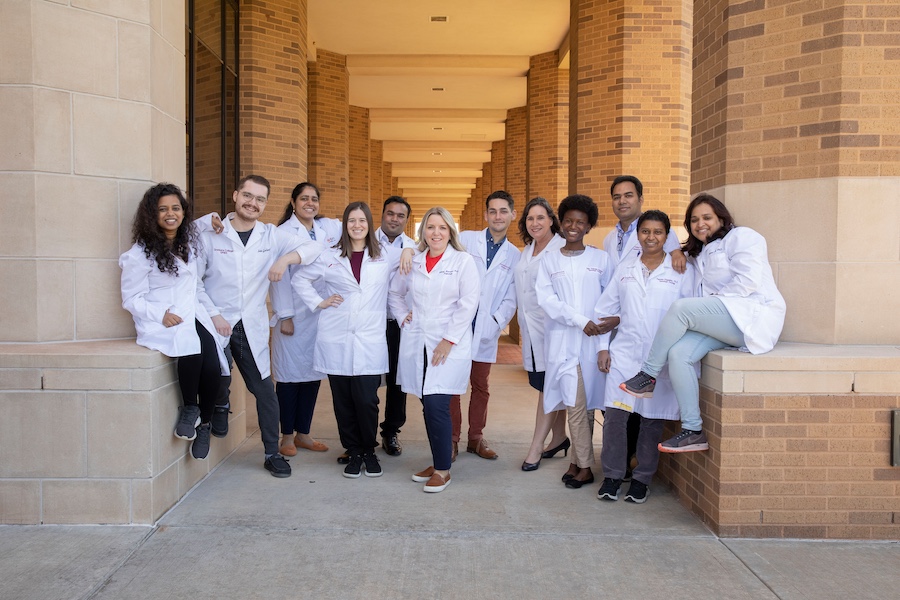At this year’s Society of Gynecologic Oncology (SGO) Annual Meeting, numerous presentations and posters explored issues related to ovarian cancer, some of which are summarized below.
This year’s SGO Annual Meeting theme, “Embrace the Past, Revolutionize the Future,” was especially fitting given the changing landscape of ovarian cancer treatment. As the Cancer Genome Atlas reveals challenges to heterogeneity and our nation makes changes in the delivery of health care, how we treat ovarian cancer is very much in flux. The SGO is committed to continuing to identify and deliver the best quality health care to gynecologic patients, as well as improving access to care based on National Comprehensive Cancer Network (NCCN) guidelines and finding solutions to economic, geographic and racial disparities.
Screening & Diagnosis
An early phase study showed the existence of a peptide “fingerprint” that may help diagnose ovarian cancer through cervicovaginal fluids. The proteins are serine proteinase inhibitor A1, periplakin, profilin1, apolipoprotein A1, and thymosin beta4-like protein. One protein, Thymosin beta4-like protein, was only observed in ovarian cancer patients while being absent in all controls. These results warrant further study.
Many studies show that precursor lesions to ovarian cancer may develop in the fallopian tubes. A study of more than 50 women showed that it is feasible to get cytology samples from women undergoing risk reducing salpingo-oophorectomies (removal of the fallopian tubes and ovaries). A population based study of women with ovarian cancer in a Minnesota county found that tubal sterilization reduced the risk of ovarian cancer by 60 percent.
The majority of women at average risk for ovarian cancer who underwent screening through an ovarian cancer screening trial did not have a significant increase in worry or anxiety.
Treatment
A small study of 30 ovarian cancer patients in Korea indicated that hyperthermic intraperitoneal chemotherapy (HIPEC) showed satisfactory outcomes. Many Phase III trials of HIPEC therapy are underway.
A post trial ad hoc analysis of results from a large treatment study showed that women with ovarian cancer survived longer if their treatment started less than 25 days after surgery.
For patients over age 65, neoadjuvant chemotherapy (treatment provided before surgery) is less expensive than primary debulking surgery. A cost model showed that neoadjuvant chemotherapy costs approximately $37,450 and primary debulking surgery costs $40,498. The model included the cost of treating complications.
Recurrence
An analysis of more than 400 patients with ovarian cancer found that almost 60 percent of ovarian cancer recurrences were identified by an increase in CA-125 level; 27 percent identified by routine office visit and 15 percent by a CT scan. In only 5 percent of patients was a CT scan the only method used to identify a recurrence. Based on Medicare reimbursement rates ($34 for a CA-125, $151 for an office visit and $993 for a CT scan), the study found that post-treatment surveillance may be expensive. The use of CT scans to follow patients significantly increases costs with a small increase in recurrence detection.
Prognosis & Long-term Survival
Data related to approximately 1000 women with ovarian cancer was analyzed to determine any link between CA-125 levels and outcomes. The data showed that women with a CA-125 level less than 500 were more likely to have no residual disease after initial debulking. Women who had lower pre-operative CA-125 levels, lower pre-chemotherapy CA-125 levels or larger declines in CA-125 had longer progression free survival and overall survival periods.
As was widely reported in the media, a study presented at the SGO meeting found that adherence to NCCN treatment guidelines results in longer overall survival for women with ovarian cancer. Treatment guidelines for initial treatment include surgery performed by a gynecologic oncologist which increases overall survival by 30 percent. NCCN treatment guidelines also include IP therapy (chemotherapy injected into the abdominal cavity, rather than through the veins) after initial surgery. However, only 37 percent of women with ovarian cancer receive standard care. The chances of a woman receiving the standard of care increase if she is treated at a high volume hospital and/or by a gynecologic oncologist. Even at high volume hospitals (those that see more than 20 ovarian cancer patients per year) and with high volume surgeons (those that see more than 10 ovarian cancer patients per year), only 50.8 percent and 47.6 percent of patients, respectively, received care that followed NCCN guidelines.
One presentation of data showed that the advantages of receiving IP chemotherapy initially, rather than IV chemotherapy, extend beyond 10 years. The data showed a 17 percent reduction in risk of death for women getting IP chemotherapy. Women who were optimally debulked to microscopic disease (most likely to occur with surgery perfomed by a gynecologic oncologist) received the most significant benefit, however IP therapy was also beneficial for those who were suboptimally debulked.
The decline in ovarian cancer deaths has been greater in urban areas than rural ones. A review of ovarian cancer deaths from 1999-2009 showed that while the rate of ovarian cancer-associated mortality declined by 17 percent in urban centers, this rate declined just 6 percent in rural counties.
Clinical Trial Design and Endpoints
There was much excitement and discussion around the presentation of the survey results “Endpoints in clinical trials: What do our patients consider important?”, which the Ovarian Cancer National Alliance developed and distributed in partnership with SGO. The results of the survey showed that patients generally have high expectations for treatment both in terms of overall survival and side effects. For example, when patients were asked to choose between a therapy that would provide an additional 3 to 4 months of progression free survival or a treatment that would provide an additional 5 to 6 months of overall survival with high rates of side effects like neuropathy, 44 percent chose the overall survival improvement but more than one-third found neither treatment option acceptable. Among women with recurrent disease, there was a general sense that stable disease, even without an improvement in survival, was acceptable. When a cure was unlikely for each hypothetical scenario, the rates of acceptable side effects doubled. Overall, patients found that a new therapy should improve overall survival by five months and that quality of life was a major concern.
Quality of Life
An analysis of a large Phase III clinical trial regarding the use of bevacizumab showed an increase in treatment related side effects. Specifically, high grade adverse events occurred in 4 percent more of the patients treated with bevacizumab than those in the standard of care arm. Other adverse events that occurred more frequently in those treated with bevacizumab were hypertension, neuropathy and hand-foot syndrome. Interestingly, symptoms that are associated with high tumor burden occurred less frequently in the bevacizumab arm.
A study of more than 200 women with gynecologic cancer showed a decrease in cognitive function by the completion of six rounds of chemotherapy. Women showed a decline in processing speed and motor response, but not in attention.
A survey of more than 1000 gynecologic cancer patients showed a marked decrease in the quality of sleep survivors got. More than half of respondents who discussed sleep quality reported sleep disturbances. Younger women and those with ovarian cancer were more likely to report sleep disturbances. Hot flashes, bowel and bladder problems were associated with sleep disturbances. Sleep issues decreased productivity, increased fatigue and decreased quality of life.
A review of the records of 100 women who died from a gynecologic cancer found that palliative medicine decreased the use of aggressive therapy at the end of life. Patient quality of life was not included in this review. Another study of the same group of patients found that timely palliative care consultations significantly reduced the cost of care at the end of life. The median costs for the last 30 days of life were $3,264 for women with palliative care and $8,098 for those without. Another study showed the cost effectiveness of introducing early palliative care with quality of life scores.


